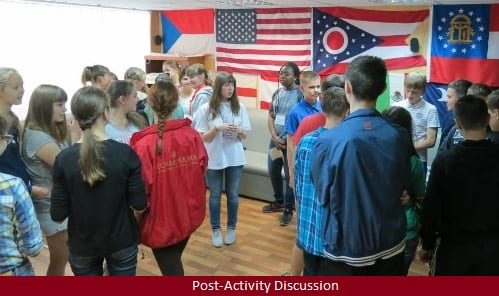
The day had finally come: I taught my first two classes yesterday and three more today. They went as well as I could have hoped for, which is very encouraging, especially given the challenges that I have had along the way. There had been a few miscommunications about how the class schedule would work, how to distribute the surveys I wanted to give students before and after they take my class (to see how effective the curriculum is on changing the children’s view on diversity), and deciding which groups at camp should take my class. I am truly thankful to Lesnaya Skazka for being so flexible and willing to let me teach this class this summer. Something like this has never been done at their camp, but they are totally open to me doing what I feel is best. We decided it would be best to teach the older children at camp (the five oldest groups) and see how that works before trying to adapt lessons to younger children. In addition to figuring out camp logistics, I was also dealing with waiting for packages of materials to arrive at camp. To make a long story very short, it has been a challenge to have things arrive to camp, but at the time I am writing, half of the things have arrived! Yay! While I don’t have all of the materials I had planned on having at this point, I have enough to make the activities work and have been able to make adjustments and brainstorm like a boss to get things done. So thankful for the support I have from Gwynn, the camp staff, and my friends (Sveta and Anya) who are willing to translate the activities for me! If I had to choose two key words that have described planning this project, they would be persistence and brainstorming.
The kids I am teaching are from about 10 years old to 16 years old. All of the groups have been engaged, having lively and interesting conversations about stereotypes and how people can be treated differently, either good or bad, because of stereotypes. Some were shy at first to talk, but as time went on, the kids became more honest and willing to share their thoughts on the sources of stereotypes (internet, movies, pop culture, family, school, etc) and even times when they had treated someone badly because of a stereotype about that person’s social group. I was honestly surprised at how much the kids knew about certain labels from around the world and how willing they were collectively to talk about them. I could see the wheels turning in their heads and they all seemed excited when I said we would be having more classes like the first class. The counselors also seemed to enjoy the class and thanked me for teaching a subject and topic they felt was really important for the children to talk about. They mentioned that open conversations about diversity rarely happen in schools and they were excited to see how the children will grow by taking this class. Now that made me feel great! That is exactly what I came to do and makes all the challenges well worth it.

There is more I can say and write about this and other things, but I am almost falling asleep writing this now, so I should hit the sack. But in closing, during one of the classes, we were talking about good and bad stereotypes and someone mentioned the stereotype (from the Russian perspective) that all Americans hate Russians. One of my friends, Rustam, said to the class that my being here at camp and teaching this class was proof that not all Americans hate Russians. While I can’t singlehandedly completely dispel that stereotype for all Russians, I am glad that, at least at Lesnaya Skazka, I can be an exception to that rule.